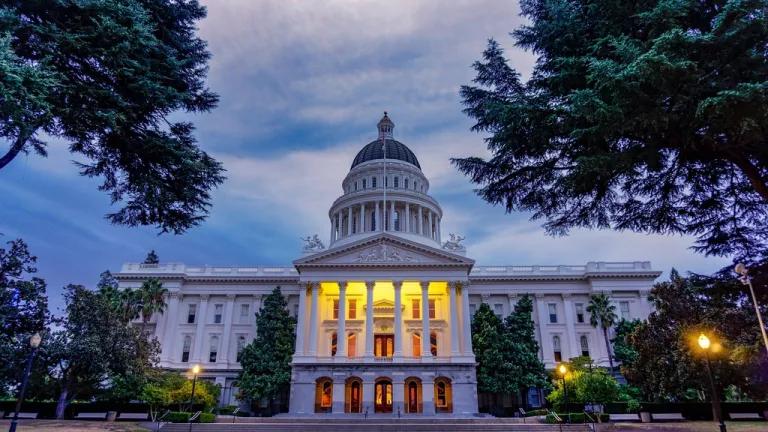
If Joe Biden is right when he says, “Don't tell me what you value, show me your budget, and I'll tell you what you value,” then California values children, education, climate action, mobility, and social and economic justice for all, among other priorities. Our state continues to be a beacon of hope in a stormy sea of political and policy chaos. Governor Jerry Brown’s proposed budget is a good start by:
- Shoring up funds for natural resources, wildlife and urban parks;
- Dedicating new revenues for equitable climate action;
- Making a solid investment in safe drinking water;
- Beefing up funding for transit and sustainable transportation and
- Saving for a rainy day, or wildfire, oil spill or other disaster.
There’s more to be done in the coming months, as the State Legislature reviews the Governor’s proposed budget, adjusts numbers after taxes come in April, and approves the final budget by the end of June. Keeping the state’s fiscal house in order and reducing debt are good for the environment, public health and all Californians. The budget also sends important signals of continued progress on maintaining leadership on combating climate change and readying California to be a more climate resilient state.
Our state budget should further our climate goals. As an international climate leader, California will host a major conference here in San Francisco this year. With transportation accounting for 40% of all carbon pollution, state funds should go to cleaning up the transportation sector—including heavy duty vehicles—which means balancing transportation funds toward transit and away from expanding highways.
While California continues to work towards the state goal of reducing greenhouse gas emissions 40 percent below 1990 levels by 2030, the Governor signed legislation to extend California’s cap-and-trade program through 2030. Program revenues have resulted in $1.25 billion in cap-and-trade funds available for appropriation in 2018-19, and the plan on how to spend these funds will be announced with the Governor’s State of the State Address later this month. These upcoming discussions on exactly how revenues from the cap and trade program will be distributed will be crucial not only to California’s future but the leadership it provides other states in the vacuum left by our federal administration.The lack of affordable housing continues to challenge California families. Last year, the state took a big step forward, but much more needs to be done to help even out housing availability and locate it in places where Californians don’t have to drive so much, closer to transit.

The other great (not good) news is the increased funding for education, righting the wrongs that our public education system endured during the Great Recession. Stabilizing the state’s education and providing appropriate funding to career technical programs will ensure students are prepared for the clean energy jobs.
The Legislature needs to get the details right as they take action on the budget, especially on transportation, housing, environmental protection, and natural resources programs, but the January budget represents a good start.



